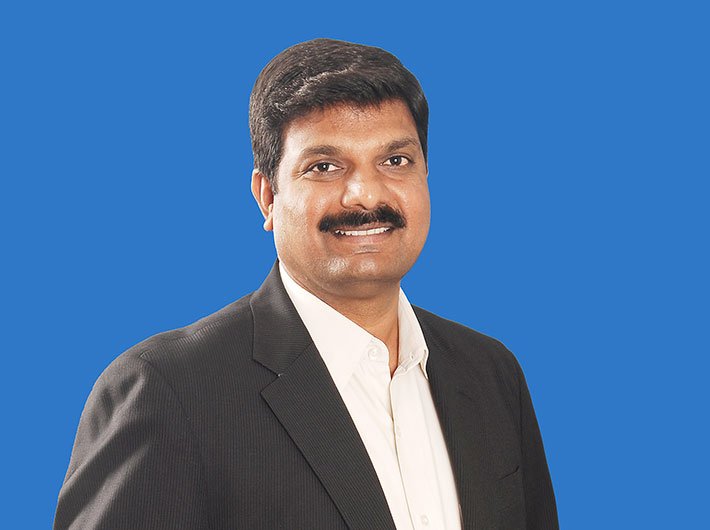Hitachi Data Systems has been involved with several e-governance initiatives in India – the national population registry, judiciary services reform, state crime research, government collaborations registry systems, and registration of staff, to name a few. In an interaction with the Governance Now, the company’s sales director for government business in India Srinivas Rao talks about the new trends in storage infrastructure and how it can help the country in its smart city initiative. Excerpts:
What are the trends in information management and data storage infrastructure?
The world is moving towards the flat file system or unstructured data and to address this requirement we have specific file and content solution that helps store massive amount of such data. This is what we call the content layer. Along with this we have the converged storage infrastructure. This is because organisations are now not looking for small isolated infrastructure. Instead they are looking for a complete “data centre in a box” kind of thing. So we have built the compute, networking and storage infrastructure into a single platform and provide it as a single converged stack so that organisations do not need to spend time integrating the bits and pieces of this critical infrastructure to roll out the applications or the projects.
What kind of converged platform are you talking about?
What we mean is the convergence of the computing, networking and storage platforms. Today most of the integration is being done by the system integrator or the organisations themselves at their data centre premises. To overcome the delays related in project rollout time-frame we have already pre-integrated all these solutions and the organisations just need to power on the box enabling them to make the entire infrastructure up and running in less than a day. In terms of what Hitachi Data System offers, we have storage infrastructure for block data kind of things, we have file and content solution for massive unstructured data and we have converged platform for organisations that want to deploy all this at a rapid pace. We also offer an information layer or vertical specific data analytics layer to go on top of our three key storage solutions.
Can you share an example from the government or public sector domain?
During the recent Olympics in London, we used the HDS data analytics layer to manage the maintenance of the metro rail network. For example, it used to be a time-based checking of the component failure of the trains which was a very costly affair. It also led to lot of downtime. We put in sensors that reported the health of the components. This helped in bringing about a change in the maintenance process from a reactive approach to a proactive, preventive one. The analytics helped reduce around 60 percent of the maintenance cost and also made the entire transport mechanism risk-free.
So how different is this layer from that of the traditional analytics or business intelligence (BI) tools?
BI is more for structured kind of data with the typical databases like Oracle or SQL. However, the challenge comes in when you get a lot of unstructured data like various records in case of the government or public sector. For example, the pensioners database and records. Every citizen has a lot of documents related to birth record, education and career including date of joining and retirement. All of these documents are nothing but unstructured data that are being kept in big files today. However, this data is now being digitised and stored in digital platforms. An analytical layer can be put on top of this data to build intelligence in the system and quickly find out information like when did the person retire, when did the person last receive his pension and what amount. We specialise in managing such unstructured data.
But what if we tag an unstructured data, for example a photograph or scanned copy of a certificate, with the structured database?
Any kind of flat file or any kind of scanned record that is attached or appended to the structured database actually does not go into the database. The database might have all the tables and information but these documents only get linked to it and are pulled out when requested. That is why Hitachi has built an object storage platform. Another example I can think of is the Facebook or Twitter. They do not use the typical block or NAS storage. Instead they use the object storage because they have to store this massive amount of data in a way that the user gets a seamless experience of an intelligent platform that even suggests names to tag the moment you upload a photograph. Today, there is a need for such technologies in government sector. Initiatives like mygov.in certainly need object storage platforms to scale the operation and to manage, analyse and make intelligent use of the citizen input that may come in multiple formats including videos and images.
Predictive analysis is another key component of effective governance. Can this platform help?
Just putting up the storage infrastructure layer will not help achieve such analysis and solutions. However, infrastructure is the critical component that needs to be put in place in case you want to adopt such technologies. Primarily we are focused on IT infrastructure and our role here will be to help the organisation implement the right kind of architecture behind this infrastructure. Today the government is talking about 100 smart cities. One of the challenges in upgrading cities to make them smart is that many of them already have some sort of IT infrastructure. You cannot throw it away. There is a need to find a way to make use of this infrastructure with the new set of implementations.
From the storage point of view we have built the virtualised storage infrastructure platform within the data centre. What it means is if you have an existing storage assets in the data centre, Hitachi can help reuse their existing IT assets. It can virtualise all the existing storage assets, make it all a common pool of storage resources and bring in all the new features that the smart city requires today to the existing platform. Certainly, at some point of time the older technology has to go, but the infrastructure might have some life and it always makes a sense to migrate in phases.
And how does it work in terms of integrating the older and newer technologies and phase-wise migration?
If we talk about the newer technologies being incorporated to make cities smarter, I will like to point out that older generation platforms consume thrice the power consumed by present technologies. Also, majority of older generation storage technologies never had the thin provisioning. Today, Hitachi brings capabilities that help reduce power consumption by almost 50 percent and thin provisioning means that organisations need to purchase less storage capacity up front and defer storage capacity upgrades in line with actual business usage. This helps optimise utilisation of available storage as compared to the traditional method where large pools of storage capacity are allocated up front to individual servers but largely remain unused. All this can lead to huge saving in operating expenditure (opex), reuse of existing infrastructure and thereby lower capital expenditure as well.
I would also like to highlight that by making the disparate storage technologies work together, seamlessly, we can help organisations and cities have a common business continuity process across the various storage islands.
parth@governancenow.com
(The interview appeared in January 16-31, 2015, issue)

